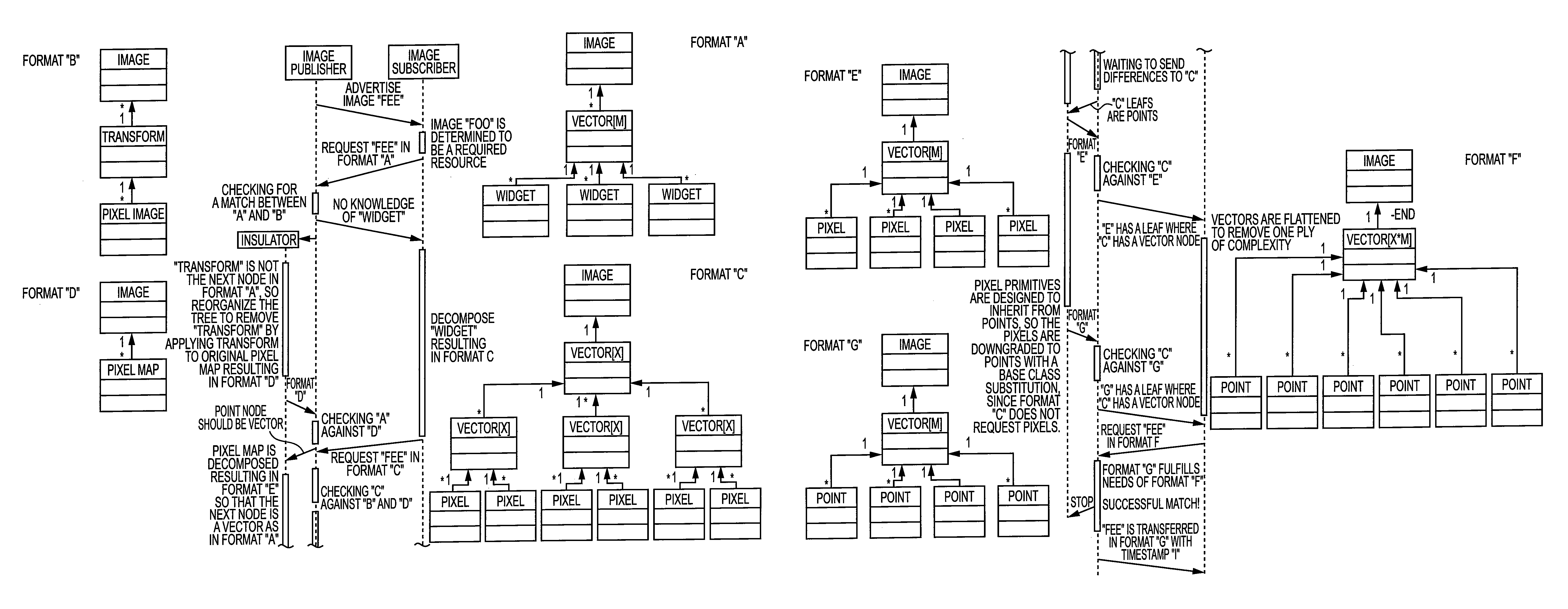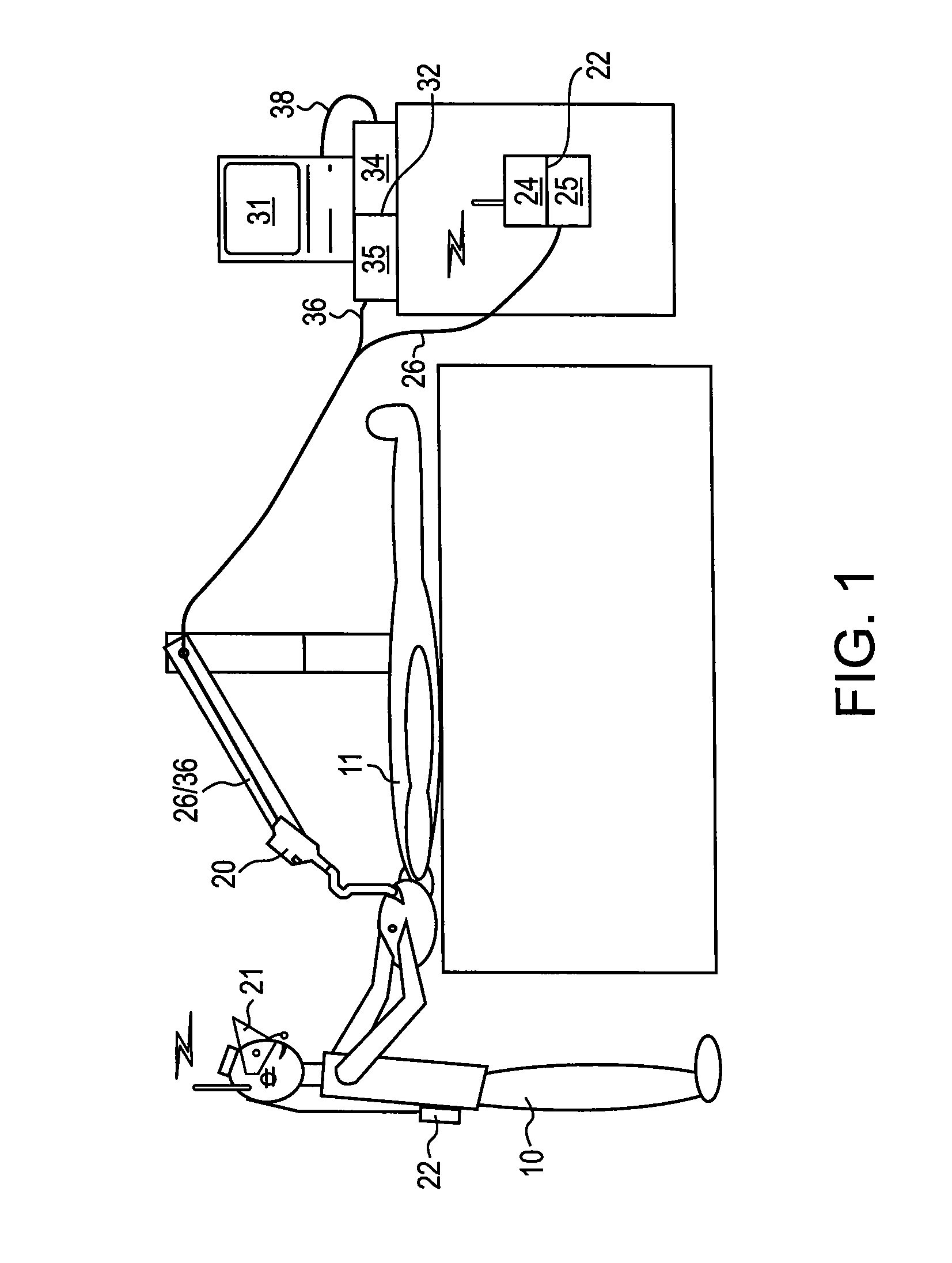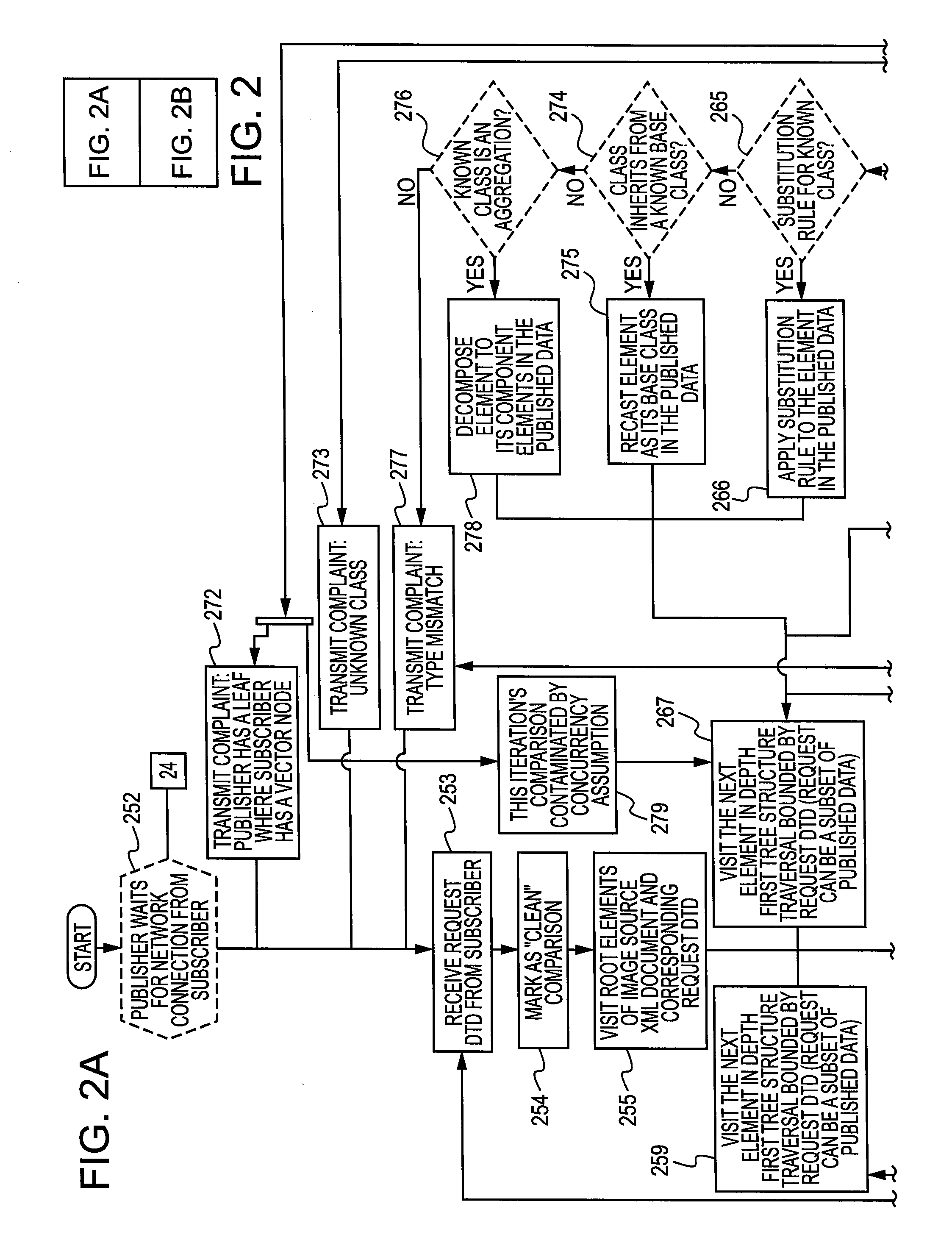Adaptive image format translation in an ad-hoc network
a technology translation network, applied in the field of adaptive image format translation in an ad-hoc network, can solve the problems of slowing adoption of new sensor modalities feeding data to existing treatment systems, and achieve the effect of slowing adoption of new sensor modalities, preventing crucial loss of structure, semantics, or conten
- Summary
- Abstract
- Description
- Claims
- Application Information
AI Technical Summary
Benefits of technology
Problems solved by technology
Method used
Image
Examples
Embodiment Construction
[0022]A typical application of the invention is presented in FIG. 1 wherein a surgeon 10 is administering to a patient 11 with the aid of a fiber-optic scanner 20 and two display devices, 21 and 31. The obvious incompatibility problems between the three pieces of equipment created by the data protocol differences are solved by the present invention which provides an adaptable interface between the scanner and each display device. Each adaptable interface is comprised of a display device server, subscriber or user, and a scanner, publisher, which interact to resolve differences in protocol. The publisher sends data to the subscriber and if the data protocol is not compatible, the subscriber advises the publisher of the type of protocol problems sensed. The publisher adjusts its output protocol and the process is repeated until a protocol match is achieved. In FIG. 1, each display device has an independent adaptive interface, but multiplexing may be used to allow a single adaptive int...
PUM
 Login to View More
Login to View More Abstract
Description
Claims
Application Information
 Login to View More
Login to View More - R&D
- Intellectual Property
- Life Sciences
- Materials
- Tech Scout
- Unparalleled Data Quality
- Higher Quality Content
- 60% Fewer Hallucinations
Browse by: Latest US Patents, China's latest patents, Technical Efficacy Thesaurus, Application Domain, Technology Topic, Popular Technical Reports.
© 2025 PatSnap. All rights reserved.Legal|Privacy policy|Modern Slavery Act Transparency Statement|Sitemap|About US| Contact US: help@patsnap.com



